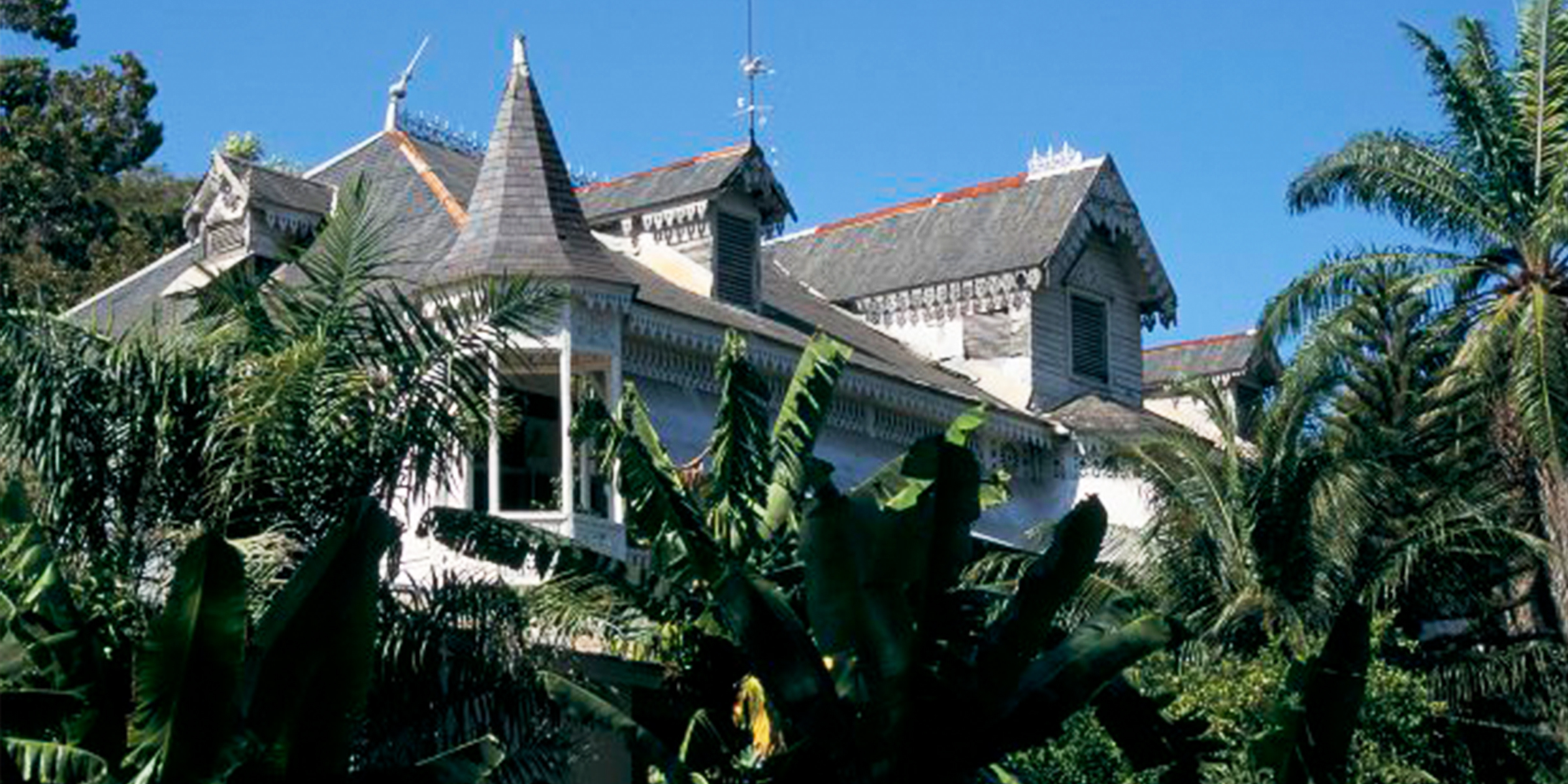
100 Facts about Haiti That Define This Caribbean Gem— Part 4
Embark on the fourth chapter of our engaging series, 100 Facts About Haiti. This installment further delves into the vibrant culture and pivotal history of this enthralling Caribbean nation.
Haiti is a country of many layers. In this segment, we'll explore the origins of the nation's celebrated dish of independence, venture into the mystical realm of Haitian Vodou with its revered Loa and entrancing possession trances, and reflect on the haunting ruins of the National Palace.
Moreover, we'll reveal Haiti's crucial but often overlooked influence on the history of a specific U.S. state. Enjoy uncovering these fascinating facts about Haiti!

The Haiti Presidential Palace pictured in May 2009. | Source: Getty Images
100 Facts about Haiti— Part 4
56. In the 17th and 18th centuries, enslaved Africans in Saint-Domingue (now Haiti) were prohibited from enjoying soup joumou, a renowned pumpkin soup of the country. Despite being the ones who prepared and served it to the white French colonizers, this ban was a deliberate act of asserting superiority, reinforcing white supremacy, and perpetuating colonial violence.
57. Haitians commemorated their independence from French rule by partaking in soup joumou. On January 1, 1804, Marie-Claire Heureuse Félicité Bonheur Dessalines, the first Empress of Haiti, distributed the soup to the newly freed citizens. This tradition persists today, honoring the monumental slave revolt that led to the establishment of the world's first free Black republic.
58. In 2021, UNESCO recognized joumou soup as part of the "Intangible Cultural Heritage of Humanity." It is consumed annually on January 1st, Haiti's Independence Day, marking the year's first meal, and is also a traditional Sunday breakfast.
59. In Haitian Vodou, Loa are spiritual intermediaries between humans and the divine, often referred to as "Bondye" or "Granmet." Unlike gods or goddesses, Vodou does not conceptualize angels or demons. Instead, Loa are seen as powerful energies overseeing various aspects of human life, honored and invoked during ceremonies and rituals for guidance, protection, and assistance in everyday affairs.
60. Papa Legba is a key figure in Haitian Vodou, serving as the guardian of crossroads and the intermediary between the human and spirit worlds. As a trickster Loa, he opens spiritual gateways, facilitating communication with other Loas during ceremonies. He is depicted as an elderly man with a crutch, accompanied by dogs, symbolizing his role as a guide and protector.
61. Damballah Wèdo and Ayida Wèdo are significant spirits in Haitian Vodou, representing creation, healing, and balance. Damballah is depicted as a patriarchal figure associated with serpents, while Ayida is his consort. Offerings to them include white eggs and veve drawings made with flour, milk, and rum, reflecting their revered status often depicted in Haitian art.
62. Met Kafou, a crucial Loa in Haitian Vodou, symbolizes the crossroads and guards the transitions between the physical and spiritual worlds. Known for his trickster nature, he challenges those seeking his aid to demonstrate courage and determination. While he provides guidance in rituals like initiation and divination, approaching him requires caution and respect due to his immense power.
63. Bawon Samdi, also known as Baron Samedi, is a prominent Loa in Haitian Vodou, presiding over the realm of the dead. Often depicted as a tall figure in formal attire with a skull face, he ensures the safe passage of souls to the afterlife. Despite his playful demeanor, he wields significant power over life and death and is invoked for communication with the deceased, healing, and protection.

A man dressed as Baron Samedi | Source: Shutterstock
64. Manbo Lasiren Dyaman embodies the mermaid goddess Lasiren in Haitian Vodou, ruling the sea. She symbolizes wealth and abundance, revered for her ability to grant prosperity to her followers. As the consort of Met Agwe, she shares dominion over the ocean's vast kingdom. Legend has it that whoever finds her comb will gain immense riches, though she is also feared for her unpredictable and formidable nature.
65. Papa Loko is an esteemed Loa in Haitian Vodou, celebrated in folk songs and revered as the guardian of Vodou temples. He plays a crucial role in imparting wisdom to new initiates and is honored with his asson (rattle) during rituals. Papa Loko is also known for his healing abilities, employing his extensive knowledge of herbal medicine and natural remedies to support those in need of physical, emotional, or spiritual healing.

Female Haitian priests, known as mambo, pray to the voodoo god of work, Kousin, on May 8, 2000, in Sarthe, north of Port-au-Prince. | Source: Getty Images
66. In Haitian Vodou, a Mambo is a female priestess, and an Ougan is a male priest. They are highly respected in the community and wield considerable authority. Mambo and Ougan intervene in various hardships, such as illness, family conflicts, financial troubles, or bad luck, acting as intermediaries between the lwa (spirits) and humans, serving as healers to restore health, harmony, and balance in the community.
67. During rituals in Haitian Vodou, participants may undergo possession trances, becoming vessels for Loa spirits known as 'chwal.' Their behavior changes, and afterward, their memories of the experience can be hazy. These trances are revered as sacred, providing healing, guidance, and spiritual growth.

During a fifteen-day Voodoo ceremony in Gonaives, a Haitian woman is in a trance on August 15, 2005, in Haiti. | Source: Getty Images
68. Since Haiti gained independence from France in 1804, the Haiti National Palace, also known as the Presidential Palace (Le Palais National), in Port-au-Prince has been constructed and destroyed multiple times. The catastrophic earthquake of 2010 caused significant damage to the palace, leaving it largely in ruins.
69. The Hotel Oloffson is a historic and culturally significant hotel in Port-au-Prince, Haiti. Known for its unique architecture and vibrant atmosphere, it has become a gathering place for artists and musicians. Featured in Graham Greene's novel "The Comedians," it remains a popular destination for travelers seeking accommodations and entertainment.
70. The Haitian slave rebellion had a significant impact on Napoleon Bonaparte, the French military leader and emperor, and his strategic decisions about his American territories. The uprising in Haiti, a key outpost for French colonial ambitions, led Napoleon to question his ability to control Louisiana. Recognizing the difficulties of managing Louisiana without Haitian support, he decided to sell this vast territory to the United States through the Louisiana Purchase of 1803. This deal doubled the size of the U.S. and changed its destiny.
From the symbolic significance of soup joumou to the intricate practices of Haitian Vodou, and the historical impact of the Haitian slave rebellion, each detail contributes to a deeper understanding of this fascinating nation.
With glimpses of Haiti in parts one, two, and three of our 100 Facts About Haiti series, anticipation mounts for the next installment. Stay tuned for more captivating insights into the country's history, culture, and significance!
